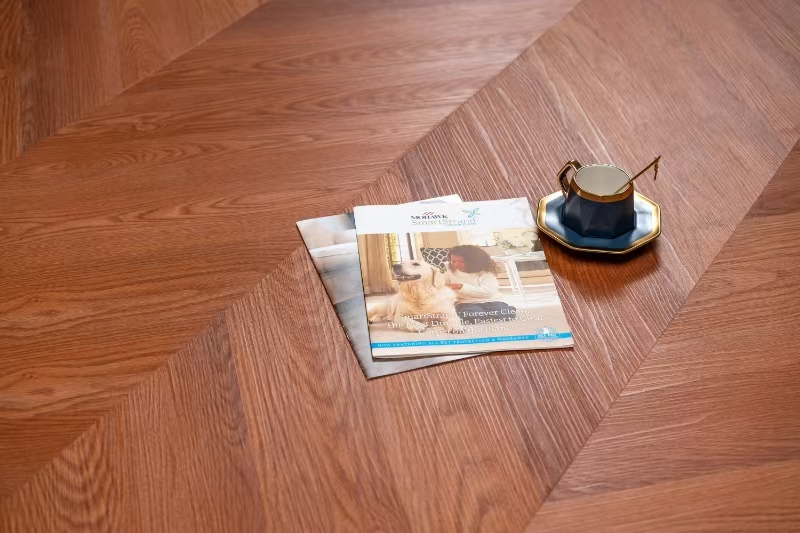
In recent years, Chevron SPC flooring has gained popularity due to its durability, waterproofness and stylish appearance. However, as with any type of flooring, proper cleaning and maintenance are essential to ensure its longevity and keep it looking its best. In this comprehensive guide, we'll explore best practices for cleaning and maintaining Chevron SPC flooring to help you maintain its beauty and functionality for years to come.

Regular cleaning is key to keeping Chevron SPC floors in top condition. Here are some simple steps to follow for daily cleaning:
1. Sweep or vacuum: Use a soft-bristle broom or vacuum cleaner with a soft brush attachment to remove loose dirt, dust and debris from the floor. This should be done daily or weekly, depending on the foot traffic in the area.
2. Wet Mop: For a deeper clean, wet mop the floor using a mild detergent or specially formulated SPC Floor Cleaner. Avoid using harsh chemicals, abrasive cleaners or excess water as these can damage the floor surface.
3. Spills and Stains: Clean up any spills or stains immediately to prevent them from seeping into the floor. Use a damp cloth or mop moistened with a mild cleaning solution to gently blot and remove stains.
4. Avoid Excessive Water: Although Chevron SPC flooring is waterproof, it is important to avoid excess water or moisture accumulation on the surface. Wipe up any spills or standing water immediately to prevent damage to the floor.
5. Use Protective Pads: Place felt or rubber pads under furniture legs to prevent scratches or dents in the floor when furniture is moved or rearranged.
In addition to regular cleaning, proper maintenance is critical to maintaining the appearance and performance of Chevron SPC floors. Here are some maintenance tips to remember:
1. Avoid sharp objects: To prevent scratches and damage, avoid dragging or sliding sharp or heavy objects on the floor. Use furniture pads or protective pads under heavy furniture or appliances to distribute the weight and prevent dents.
2. Trim pet nails: If you have pets, trim their nails frequently to avoid scratching the floor surface. Place a mat near an exterior door to capture dirt and moisture from your pet's paws before they hit the floor.
3. Avoid direct sunlight: Over time, direct sunlight can cause fading and discoloration of floors. Use blinds, curtains or UV-blocking window film to minimize your floor's exposure to sunlight.
4. Regular Inspections: Check your floors regularly for any signs of damage, wear, or loose boards. Address any issues promptly to prevent further damage and maintain the integrity of your flooring.
5. Professional cleaning: Consider hiring a professional cleaning service company that specializes in SPC floors to perform deep cleaning and maintenance at least once a year. Professional cleaners have the expertise and equipment to effectively clean your floors and make them look like new without causing damage.
When cleaning and maintaining Chevron SPC floors, there are some common mistakes you should avoid to prevent damage and maintain floor quality:
1. Use Abrasive Cleaners: Rough or abrasive cleaners can scratch and dull the floor surface. Stick to a mild cleaner or detergent specifically designed for SPC floors.
2. Ignore Spills: Allowing spills to sit on your floors for an extended period of time can lead to staining and damage. Clean up all spills immediately to prevent them from seeping into the floor.
3. Overwaxing: Chevron SPC floors do not require waxing or polishing. In fact, using wax or polish can create a slippery surface and lead to grime buildup over time.
4. Ignore Manufacturer's Guidelines: Always follow the manufacturer's cleaning and maintenance recommendations to ensure you are using the products and methods appropriate for your specific type of Chevron SPC flooring.
By following these cleaning and maintenance guidelines, you can ensure your Chevron SPC flooring remains in tip-top shape for years to come. With regular maintenance and attention, you can enjoy the beauty and durability of SPC flooring while minimizing the need for expensive repairs or replacements.
Previous: What are the types of LVT flooring?
Next: What is SPC flooring?